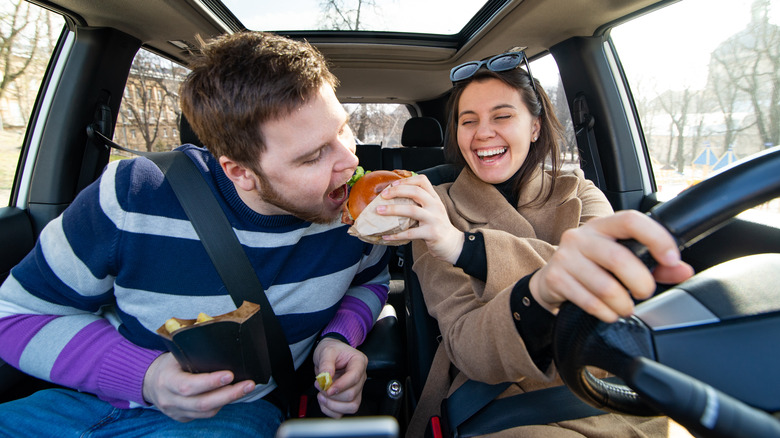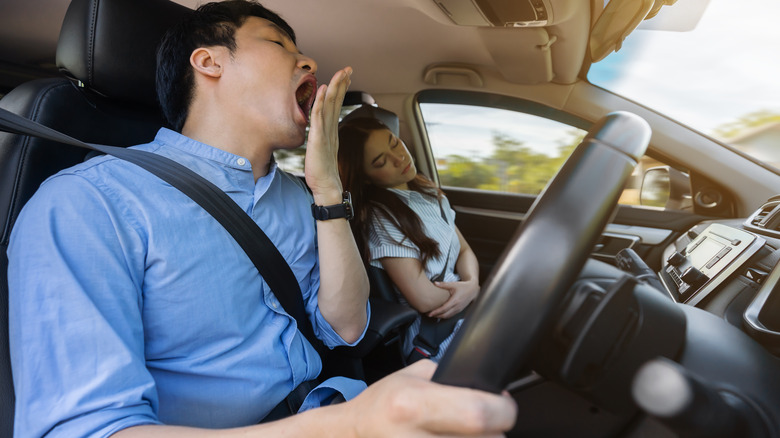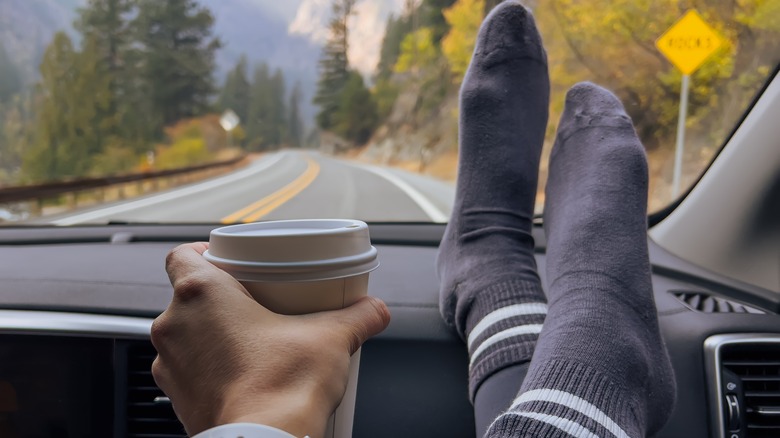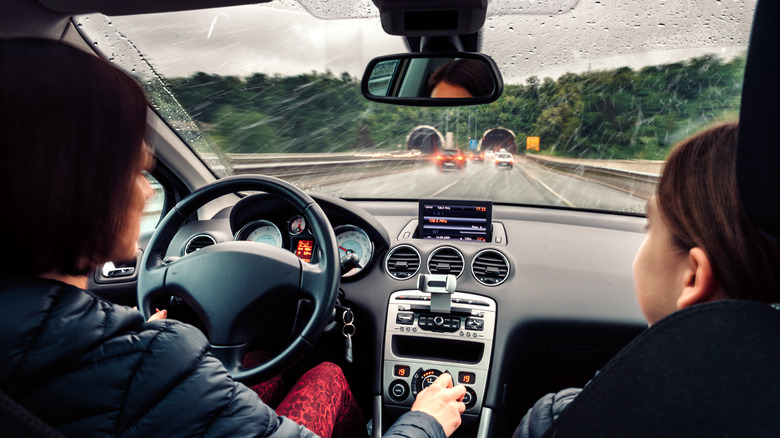Peopleimages/Getty Images
Tricia Goss
Driving distracted

Distracted driving is a significant hazard during road trips or at any time. The National Highway Traffic Safety Administration (NHTSA) reported that 3,522 people died in 2021 due to this dangerous behavior. Distractions can be anything from taking care of a pet while driving to sending a text, putting on makeup, or eating while behind the wheel. These distractions can put the driver, passengers, pedestrians, and other people on the road at risk.
It’s important to remember that a short moment of distraction can turn a fun road trip into a tragic event. To prevent this, drivers need to stay focused on the road. Simple steps like securing pets, putting away mobile devices, and not eating while driving can significantly reduce the chances of an accident. By being aware of the danger of distracted driving and taking preventative measures, we can ensure the safety of everyone on the road during road trips.
Driving while fatigued or drowsy

Driving while tired is a mistake that can put you and others on the road at risk. According to the Centers for Disease Control and Prevention (CDC), about 1 in 25 adult drivers have fallen asleep while driving. Fatigue can seriously affect your ability to drive safely by slowing your reaction time, reducing your awareness of your surroundings, and impairing your judgment. So, it’s essential to be aware of the signs of drowsy driving, which include yawning, finding it hard to keep your eyes open, drifting from your lane, and feeling irritable or restless.
To prevent fatigue while driving, get at least 7 hours of sleep before hitting the road and take regular breaks every 2 hours or 100 miles. Also, avoid driving during your usual sleep hours, and don’t drive more hours in a day than you can safely handle. If you feel drowsy while driving, pull over and take a nap or switch drivers. Drinking caffeine or taking a short walk can also help you stay alert.
Interacting negatively with other vehicles

F01 PHOTO/Shutterstock
Your attitude can have a significant impact on your experience. Negative attitudes can turn a fun adventure into a stressful and unpleasant journey for everyone involved. Not to mention, driving aggressively or experiencing road rage can be dangerous for you, other drivers, and passengers. To make your road trip as safe and enjoyable as possible, try to maintain a friendly and polite attitude towards other drivers. Give larger vehicles enough space and avoid sudden lane changes or hostile gestures.
Road safety is a shared responsibility, and every driver plays a role in promoting it. When you’re behind the wheel, always give plenty of space to tractor-trailers on the road. They need more distance to stop and have more significant blind spots, so be sure to provide them with some extra room. Also, keep a safe distance from other cars, especially during bad weather when visibility is low. Everyone wants to get to their destination safely and enjoy the journey, so be mindful of your actions and promote road safety by maintaining safe driving practices.
Not keeping limbs in safe positions

Chiociolla/Shutterstock
Neglecting to keep your limbs in safe positions while on a road trip introduces an additional layer of risk that can compromise personal safety and the well-being of others on the road. Maintaining proper driving postures is vital to your safety on the road. Avoid the temptation of steering with your knees or adopting unconventional positions.
Even as a passenger, this can be good advice. Did you know that something as simple as putting your feet on the dashboard can be hazardous? It could lead to some serious injuries like fractures, dislocations, and even broken bones in the event of a collision. If you have your feet up while an airbag deploys, it can cause painful and even life-altering damage like your knee breaking your nose or even going through your eye socket (per FullFact.org). During a rollover accident, you can be vulnerable to injuries because the chest and knee airbags won’t be able to provide enough protection.
Driving in poor conditions

Zivica Kerkez/Shutterstock
As a road trip enthusiast, it’s important to be aware of the challenges that come with different terrains and weather conditions. Driving in poor conditions, whether rain, snow, or fog, requires heightened caution and adaptability. Recognizing the challenges of adverse weather is crucial for a safe and enjoyable road trip. In poor conditions, your visibility may be compromised, and road surfaces can become slippery, demanding a more controlled and deliberate approach to driving.
Another thing to remember is that getting your vehicle ready is just as important as mapping out your route. Be sure to check your tires, brakes, and fluids before you hit the road to ensure a smooth and safe journey. Remember, the weather can be unpredictable; it’s always a good idea to be prepared for anything.
So, buckle up to hit the road with safety as your top priority, and have a great trip!

